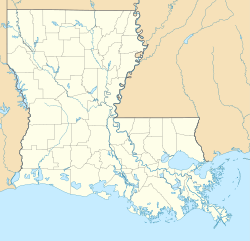History
In 1872, the Reverend J.P. Lytton, of Woodville, Mississippi held Episcopalian services in Laurel Hill. The demand for services was large enough that Bishop Wilmer held services on March 17, 1873, and commissioned J. Burruss McGehee to be a lay reader to hold further services. These were held at first in the local Methodist chapel and then at the home of Colonel V.D. Walsh.
The parish was organized as St. John's Church on September 28, 1873, with the Reverend A.G. Bakewell as rector; McGehee as senior warden and Walsh as junior warden.
William Goddard built the church with the first service was held on November 23, 1873. Total cost of the construction including furniture was $2,200. Colonel Walsh contributed $1,000 and the church became a memorial to his only daughter, Susie Jessie Walsh. The church was consecrated on Whitsunday, May 14, 1874. Early rectors included J. Wilmer Turner, Frank E. Evans, and E.W. Hunter, [3]
This page is based on this
Wikipedia article Text is available under the
CC BY-SA 4.0 license; additional terms may apply.
Images, videos and audio are available under their respective licenses.


